Hanze University of Applied Sciences (The Netherlands)

Hanze University of Applied Sciences (Hanze UAS) is the largest technical and vocational university in the northern Netherlands, located in Groningen. Established in 1986, it offers a wide range of bachelor's and master's programs in Dutch and English, with a strong emphasis on practical education and applied research. The university has approximately 28,000 students and 3,200 employees, with around 8% of the student body being international. Hanze UAS focuses on four main social assignments: Transition to a Healthy and Active Society, Energy Transition and Circularity, Digital Transformation, and Strengthening a Liveable and Sustainable Northern Netherlands. The Zernike Campus, named after Nobel Prize-winning scientist Frits Zernike, is a hub for research and innovation, housing facilities like the Energy Transition Centre (EnTranCe) and the Energy Academy Europe. The university's key buildings include the Van Olst Tower, Van DoorenVeste, and the Wiebenga building. Hanze UAS also offers extensive sports facilities, libraries, and dining options. Additional campuses include the Hanze Institute of Technology in Assen, the Pop Culture program in Leeuwarden, and the Dance Academy in Amsterdam.
Web
University of La Laguna (Spain)

The University of La Laguna (ULL), located in San Cristóbal de La Laguna on Tenerife, has four main campuses and several dispersed centres. Founded in 1792 as the University of San Fernando, it is the oldest higher education institution in the Canary Islands. In 2024, ULL will celebrate its 232nd anniversary. For the 2023/24 academic year, ULL has 20,496 students, with over 87% in undergraduate courses. The university offers 47 undergraduate degrees, 38 master's programmes, 21 doctoral programmes, and 11 institutional degrees. It also provides distance and semi-distance learning courses. ULL comprises 10 faculties, 3 university schools, and 3 affiliated centres. Key facilities include the Rectorate building, University Assembly Hall, sports facilities, and 14 libraries. The campuses are grouped by areas of knowledge, with Anchieta focusing on natural sciences, Guajara on social sciences and humanities, Central on education, and Ofra on health sciences.
Web
Bragança Polytechnic University (Portugal)
The Polytechnic Institute of Bragança (IPB) celebrated its 41st anniversary on January 28, 2024. Established in 1983, IPB has developed six schools: Agriculture, Education, Technology and Management, Communication, Administration and Tourism, Health, and Hospitality and Wellness. IPB operates campuses in Bragança, Mirandela, and Chaves, with the Bragança Campus being the largest. IPB's research and innovation ecosystem includes several research centres and laboratories, such as the Mountain Research Centre (CIMO) and the Research Centre in Digitisation and Intelligent Robotics (CeDRI). The institute's central services provide technical and administrative support across various departments. IPB offers extensive student accommodation, sports facilities, and libraries. The institute also has an outdoor auditorium, a Mentoring Academy, and an Academic Building for student organisations. Additionally, IPB provides an interfaith space and a clinical centre for medical and nursing services.
Web
Hochschule Bremen - City University of Applied Sciences (Germany)

Hochschule Bremen - City University of Applied Sciences (HSB) was founded in 1982 through the merger of four universities, with roots dating back to 1798/99. Today, HSB has nearly 9,000 students and offers around 70 degree programmes across five faculties: School of International Business, School of Architecture, Civil and Environmental Engineering, School of Social Sciences, School of Electrical Engineering and Computer Science, and School of Nature and Engineering. Many programmes are interdisciplinary and emphasize practical and professional cooperation. HSB is known for its practical orientation and internationality, with strong ties to the business world. About 90% of students write their final theses in cooperation with companies, and many programmes include mandatory study and practical semesters abroad. The university is spread over several locations in Bremen, with the main campus, Campus Neustadt, housing key components like the Rectorate and Central Administration. Other campuses include Campus Werderstrasse and Campus Airportstadt. All locations are well connected by public transport and are bike-friendly. HSB shares a library with the University of Bremen, with branch libraries on its own campuses. The university does not operate student dormitories, but the student union offers over 2,000 places for students. HSB addresses current societal and economic challenges through its diverse profile, focusing on digitalisation, energy, mobility, urban development, health, and sustainability. The university has numerous laboratories for practical learning, particularly in fields like shipbuilding, marine technology, biology, bionics, electrical engineering, computer science, mechanical engineering, nursing, health, architecture, construction, and environment.
Web
Silesian University in Opava (Czechia)

The Silesian University in Opava (SUO) was established in 1991, evolving from two faculties of Masaryk University. It now comprises three faculties and two institutes, serving around 5,200 students and 630 staff members across Opava and Karviná. The university's facilities are spread across various historic buildings in both cities, each adapted for educational purposes. In Opava, the university includes the Rectorate, the Faculty of Philosophy and Science, the Faculty of Public Policies, the Mathematical Institute, and the Institute of Physics. Karviná hosts the School of Business Administration. The university offers specialized facilities for arts, health, social care, astrophysics, museology, foreign languages, and computer science. SUO has libraries in both cities, providing resources tailored to their respective disciplines. Student accommodation is available in both Opava and Karviná, though the university does not offer catering services. The university's infrastructure supports a range of academic and extracurricular activities, fostering a comprehensive educational environment.
Web
University West (Sweden)

University West (UW) was founded in 1990 and initially had three campuses, but since 2008, all activities have been centralized in Trollhättan. The university focuses on work-integrated learning (WIL), offering 30 undergraduate and 20 postgraduate courses. With 14,000 students and 750 employees, UW has four departments: Business, Economics and IT; Social and Behavioural Studies; Health Sciences; and Engineering Sciences. The university emphasizes Work Integrated Learning and Production Engineering, with around 75 doctoral students in these fields. UW provides a wide range of programmes in areas such as computing, business, health, teaching, media, and technology. The university collaborates closely with society and businesses, integrating work-based education into its curriculum. Research at UW focuses on technology, social sciences, health, and humanities, with priority areas in Work Integrated Learning and Production Technology. The campus in Trollhättan is designed to support both academic and social life, featuring facilities like a student bookstore, health services, study counselling, a Creative Centre, a Media Centre, and the Production Technology Center. The University Library offers various study spaces, and accommodation is available for international and exchange students. The campus plan for 2030 aims to create an environment where academia and working life meet, integrating the campus into the city centre and fostering collaboration. The vision is to make the campus a creative and inspiring environment for lifelong learning and cross-border collaboration.
Web
Cracow University of Technology (Poland)

The Cracow University of Technology (CUT) was founded in 1945 and has since developed both academically and infrastructurally. It spans two campuses over 110 hectares, serving 14,000 students and employing around 1,100 academic staff. CUT comprises eight faculties, including Architecture, Computer Science, Electrical and Computer Engineering, Civil Engineering, Materials Engineering and Physics, Environmental Engineering and Energy, Chemical Engineering and Technology, and Mechanical Engineering. Each faculty is equipped with specialized laboratories and facilities. The university also includes a Doctoral School, established in 2019, and various other units such as the Centre for Education and Organisation of Quality Maintenance Systems, International Centre of Education, Pedagogy and Psychology Centre, Sports and Recreation Centre, the CUT Library, and the Foreign Languages Centre. Many of CUT's buildings have historical significance, reflecting Cracow's cultural and academic heritage. The main campus on Warszawska Street is located in 19th-century barracks, while the Faculty of Architecture and the Faculty of Materials Engineering and Physics are housed in the former royal palace in Łobzów. The university also has a student housing complex and extensive sports facilities.
Web
University of Franche-Comté (France)

Founded in 1423, the University of Franche-Comté (UFC) is a multidisciplinary university with a health sector, structured around 12 components, including 6 faculties and 5 institutes and schools. The university is spread over 6 campuses and 8 sites, with the main campus in Besançon. UFC has over 26,000 students and employs 2,400 people. The Bouloie-Temis Campus is the largest, housing almost 60% of the student population. UFC's facilities include major university libraries, student residences, dining facilities, and sports activities. The university also occupies 9 historical monuments, which present challenges for accessibility and energy-efficient renovations. The campuses are well-connected by public transport. The university offers a wide range of vocational courses and has strong links with the local economy. Research activities are highly developed, particularly in health and technology sectors. UFC continues to expand, with new programmes and campuses being developed to meet the needs of students.
Web
Aleksandër Moisiu University of Durrës (Albania)

The Aleksandër Moisiu University of Durrës (UAMD), founded in 2005, is located in the historic city of Durrës, Albania. It serves approximately 17,000 students and employs over 500 academic staff. The university offers more than 100 programmes, including bachelor's, master's, doctoral, and two-year professional programmes. UAMD has five faculties: Education, Information Technology, Business, Professional Studies, and Political Sciences. Each faculty is equipped with specialized classrooms and laboratories, such as state-of-the-art computer labs, an audio-video studio, and a virtual reality hub for the Faculty of Information Technology. The Faculty of Professional Studies features laboratories for mechanical engineering, maritime studies, physiotherapy, and more. The university also provides shared infrastructure for academic conferences, workshops, cultural events, and guest lectures. It has three well-equipped libraries offering a wide range of academic resources and study spaces. While UAMD currently lacks on-campus student accommodation, plans are underway to address this need.
Web
